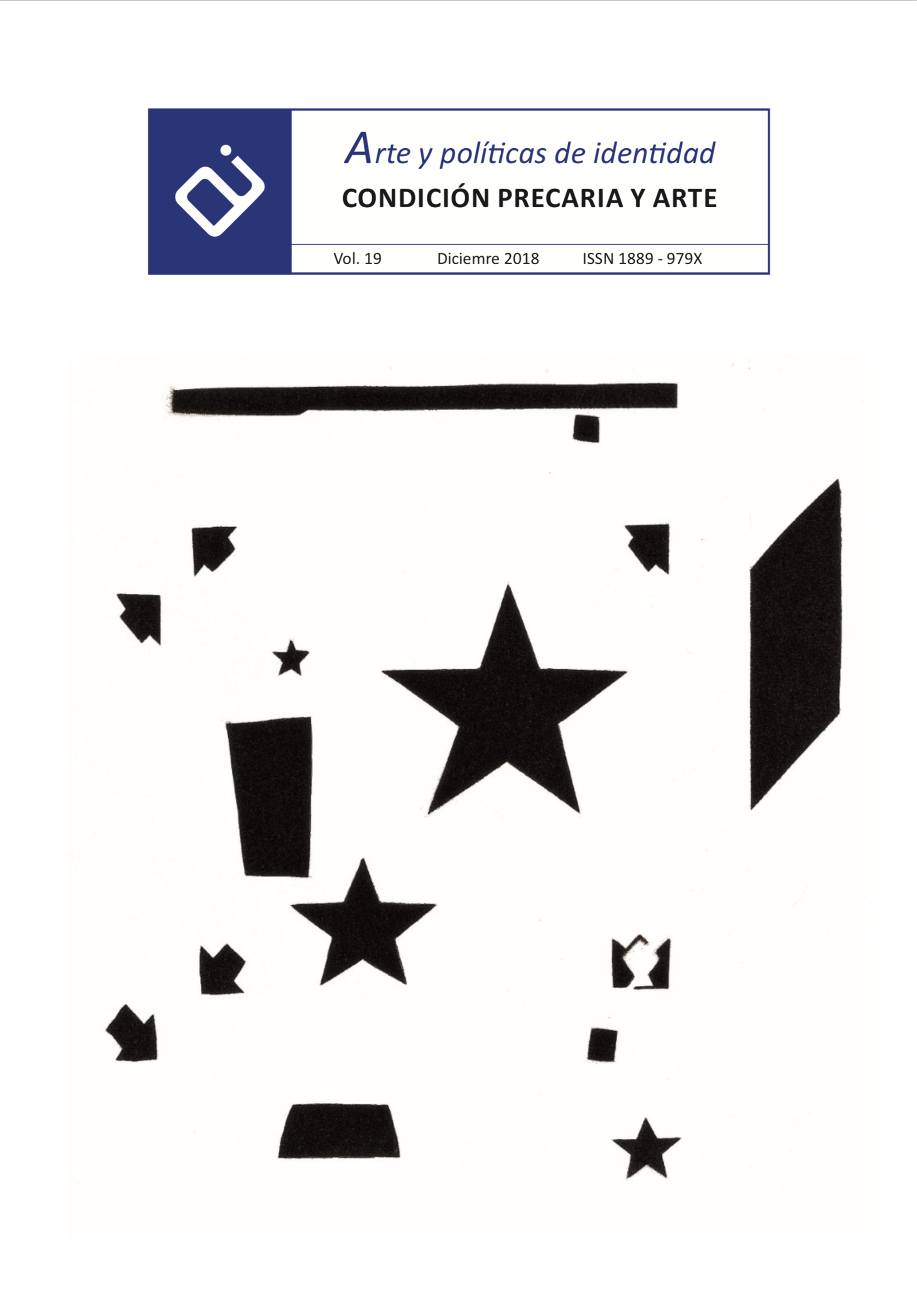Creatividad bajo presión
Los efectos de la des-institucionalización y la mercantilización sobre el trabajo creativo
Resumen
Aunque hay abundantes ejemplos de personas excepcionalmente exitosas que trabajan en las artes, muchos artistas encuentran difícil establecerse y mantenerse en el trabajo creativo. Este artículo analiza la creatividad sostenible a través de la lente del llamado biotopo artístico. Propone que la creatividad sostenible en las artes requiere un equilibrio entre las diferentes esferas del biotopo artístico: el dominio doméstico, el dominio de los pares, el dominio civil y el dominio del mercado. Sin embargo, hoy en día los artistas y profesionales creativos experimentan cada vez más presiones del dominio del mercado, ya que su lógica de cuantificación se entromete en las esferas doméstica, educativa y civil del biotopo. De ahí la pregunta central de este documento: ¿cuáles son las consecuencias de una protección institucional decreciente y una creciente mercantilización del biotopo artístico? Se buscan respuestas a través de una encuesta electrónica en la que participaron 1.591 artistas y profesionales creativos de Europa Occidental. Se argumenta que un mercado que impone su lógica a otras esferas -en este caso en el biotopo artístico- consecuentemente comenzará a transformarse. Estas consecuencias se describen en términos de “retroalimentación”: (1) desequilibrio trabajo-vida, (2) isomorfismo y (3) monopolización.Descargas
-
Resumen940
-
PDF935
Citas
Adams, B.N. (1971). The American Family. A Sociological Interpretation. Chicago, USA: Chicago University Press.
Bal, M. (2006). Exposing the Public. In S. Macdonald (Ed.) A Companion to Museum Studies (pp. 525-542). Wiley Online Library. Blackwell Publishing Ltd. doi: https://doi.org/10.1002/9780470996836.fmatter
Biesta, G. (2013). The Beautiful Risk of Education. Boulder & London: Paradigm Publishers.
Bott, E. (1957). Family and Social Network. Roles, Norms and External Relationships in Ordinary Urban Families. New York, USA: Free Press.
Bourdieu, P. (1984). Distinction: A Social Critique of the Judgement of Taste. Cambridge, USA: Harvard University Press.
Corbin, J.M., & Strauss, A. (1990). Grounded theory research: procedures, canons, and evaluative criteria. Qualitative Sociology, 13(1), 3-21.
DiMaggio, P., & Powell, W. (1983). The iron cage revisited. Isomorphism and collective rationality in organizational fields. American Sociological Review, 48(2), 147-160.
DiMaggio, P., & Powell, W. (1991). The New Institutionalism in Organizational Analysis. Chicago, USA: University of Chicago Press.
Gill, R., & Pratt, A.C. (2008). In the social factory? Immaterial labour, precariousness and cultural work. Theory, Culture & Society, 25(7-8), 1-30.
Gielen, P., & Laermans, R. (2004). Een Omgeving voor Actuele kunst. Een Toekomstperspectief voor het Beeldende-Kunstenlandschap in Vlaanderen. Tielt, Belgian: Lannoo.
Gielen, P. (2005). Art and social value regimes. Current Sociology, 53(5), 789-806.
Gielen, P. (2009). The Murmuring of the Artistic Multitude. Global Art, Politics and Post-Fordism. Amsterdam, Netherlands: Valiz.
Gielen, P., & De Bruyne, P. (2009). Being an Artist in Post-Fordist Times. Rotterdam, Netherlands: NAi.
Gielen, P. (2010). The art institution in a globalizing world. The Journal of Arts Management, Law & Society, 41(4), 451-468.
Gielen, P. (2013a). Artistic praxis and the neoliberalization of the educational space. Journal of Aesthetic Education, 47(1), 58-71.
Gielen, P. (2013b). Institutional Attitudes. Instituting Art in a Flat World. Amsterdam: Valiz.
Gielen, P., & Volont, L. (2014). Sustainable Creativity in the Post-Fordist Condition. Groningen, Netherlands: University of Groningen (internal report).
Gielen, P., & Lijster, T. (2015). Culture: The Substructure for a European Common. In P. Gielen (Ed.) No Culture, No Europe. On the Foundation of Politics (pp.19-66). Amsterdam, Netherlands: Valiz.
Hayes, A.F., & Krippendorff, K. (2007). Answering the call for a standard reliability measure for coding Data. Communication Methods & Measures, 1(1), 77-89.
Heinich, N. (1991). La Gloire de Van Gogh: Essai d’Anthropologie de l’Admiration. Paris, France: Editions de Minuit.
Lijster, T.,Milevska, S.,Gielen, P., & Sonderegger, R. (2015). Spaces for Criticism. Shifts in Contemporary Art Discourses. Amsterdam, Netherlands: Valiz.
Miles, M.B, & Huberman, M. (1994). Qualitative Data Analysis: An Expanded Sourcebook. London, UK: Sage.
Nowotny, S. (2011). Immanent Effects: Notes on Cre-activity. In: G. Raunig, G. Ray, & W. Wuggenig (Eds.) Critique of Creativity: Precarity, Subjectivity and Resistance in the Creative Industries(pp. 9-21). London, UK: Mayfly.
Sennett, R. (2006). The Culture of the New Capitalism. New Haven, USA: Yale University Press.Sennett, R. (2011). The Corrosion of Character: The Personal Consequences of Work in the New Capitalism. New York, USA: Norton.
Van Heusden, B., & Gielen, P. (2015). Arts Education Beyond Art. Teaching Art in Times of Change. Amsterdam, Netherlands: Valiz.
Velthuis, O. (2007). Talking Prices. Symbolic Meanings of Prices on the Market for Contemporary Art. Princeton, USA: Princeton University Press.
Virno, P. (2004). A Grammar of the Multitude. Los Angeles & New York, USA: Semiotext(e).
Weeda, I. (1995). Samen Leven. Een Gezinssociologische Inleiding. Amsterdam, Netherlands: Stenfert Kroese.
Van Winkel, C., Gielen, P., & Zwaan, K. (2012). De Hybride Kunstenaar. Breda, Netherlands: Expertisecentrum Kunst en Vormgeving, AKV, St.Joost, Avans Hogeschool.
Zaretsky, E. (1977). Gezin en Privéleven in het Kapitalisme. Nijmegen, Netherlands: SUN.
Works published in this journal are subject to the following terms:
- The Service of Publications from the University of Murcia (publishing house) keeps the published works’ copyrights, and favors and allows the reuse of these works under the license indicated in point 2.
- Works are published in the journal’s online edition under the license Creative Commons Reconocimiento-NoComercial-SinObraDerivada 3.0 España(texto legal). They can be copied, used, disseminated, transmitted and publicly exhibited, as long as: i) the author and original source of publication are cited (journal, publishing house and work’s URL); ii) they are not used for commercial purposes; iii) the existence and specifications of this license are mentioned.
3. Conditions for auto-file. It is allowed and encouraged that authors share electronically their pre-print version (the pre-reviewed version) and /or post-print version (the reviewed and accepted version) of their Works before the publication, since it promotes its circulation and dissemination. RoMEO color: green.










